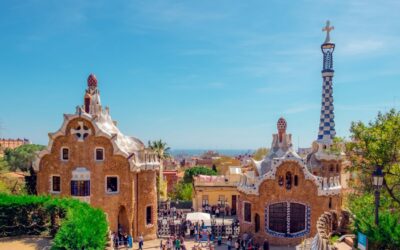Let me introduce you the detailed description of the visited one of the most famous football fields in the world – Camp Nou, the football stadium of the famous Barcelona Football Club. Whether you are a big football fan or interested in learning some history of football this guide contains all the information you need to know about Camp Nou and its role in the world of sports.
1. History of Camp Nou
In fact, Camp Nou, which means New Field in Catalan was constructed and commissioned to operate on September 24th, 1957. It took over from Les Corts as Barcelona’s home ground and shortly began to represent Catalonia and its football history.
For decades it laid witness to numerous footballing dramas, remembering the matches, internationals, and outstanding players of the_recently over Camp Nou_. The stadium has been expanded and upgraded, and it has undergone latest remodelling in 2021, so fans are guaranteed a comfortable experience.
2. Key Features of Camp Nou
More so when it comes to the capacity, architectural design and general facility of the stadiums nowhere is better that Camp Nou. Here are some key features of the stadium:
Capacity: Barcelona’s Camp Nou stadium with a mere total capacity for accommodation of 99,354 football spectators is the largest football stadium in Europe and third in the whole wide world.
Museum: Properly, the stadium contains the FC Barcelona Museum that narrates the club’s history, collects cups, medals, and other souvenir items, in addition to providing the visitors with interactive actions.
Field Dimensions: Camp Nou pitch size is 105 meters in length, 68 meters in width, which comfortably fits the standard football pitch size.
Espai Barça: An ongoing master plan to redesign the whole Camp Nou neighborhood, build a new Palau Blaugrana (an indoor stadium) and upgrade the environment of the stadium.
Player Facilities: The dressing room, medical facilities and training areas for players and coaches are some of the best anywhere in a stadium.
3. A snapshot into a match day at Camp Nou
Visiting a home game for FC Barcelona at Camp Nou is no doubt a classic event for any soccer lover. Here are some tips for making the most of your matchday experience:
3.1 Getting Tickets
Tickets differ depending on the game to be played andgames are usually packed especially those against big rivals like Real Madrid. The official barsa website has a booking option for tickets or you can engage licensed ticketing companies in the purchase of the tickets.
3.2 Arriving at the Stadium
The stadium is well connected to public means of transport with many bus and metro station nearby the Camp Nou. In order to experience the atmosphere before the match, get to the stadium an hour or two before the start and go shopping at the Barça store.
3.3 Stadium Etiquette
Obey and follow the different customs and practices of the country by clanging the noisy voices of the supporters. Smoking is also banned throughout the entire area of the stadium since its walls enclose a separate smoking area outside the arena.
3.4 Exploring the Area
Use your visit to find the football culture related to Camp Nou to the maximum. Some popular places of interests within this area include visiting the Johan Cruyff Stadium or the Barcelona Olympic Stadium or a leisurely walk through Les Corts – a well know borough in the city of Barcelona.
4. Stadium Tours
If you were unable to get a ticket for a live match don’t worry, here are some other things you could do. Stadium and club tours let you in to the arena; you get a chance to tour the stadium and check out the museum and engage in a brief history of the club. More importantly, the tours are available in several languages as an online booking option or at the ticketing office within the stadium.
5. Final Thoughts
Camp Nou is not just a football pitch but it reflects pride, heritage and affection for the sport. Whether one is lucky to be in a position to watch a match or decide to take a stadium tour, The Camp Nou is a delightful experience for football lover, tourists among vistors. Its grandeur and history are still mesmerizing millions of people all over the world, that is why football fan should definitely visit it.
Table of Contents



